 | | | 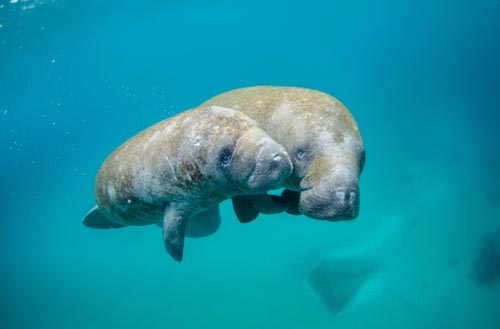 As cold weather settles in across the U.S., many ocean lovers find themselves longing for the endless summer days on the beaches, enjoying the cooling sea breeze, feeling the warm sand underfoot, and wondering at the majestic creatures dancing in the waves. It is easy in these darker months to feel less connected with the oceans, especially for those who live further inland. But the amount of back and forth action going on in the fight to save our oceans is enough to make one sea sick, so hold on! As cold weather settles in across the U.S., many ocean lovers find themselves longing for the endless summer days on the beaches, enjoying the cooling sea breeze, feeling the warm sand underfoot, and wondering at the majestic creatures dancing in the waves. It is easy in these darker months to feel less connected with the oceans, especially for those who live further inland. But the amount of back and forth action going on in the fight to save our oceans is enough to make one sea sick, so hold on! Not even a week after the end of the climate talks in Glasgow, the Biden Administration auctioned off $192 million worth of federal drilling leases in the Gulf of Mexico. But it may not be… all bad? Early reports indicate that Exxon Mobile purchased 94 lease plots to start a $100 billion project to establish carbon capture and storage facilities. While carbon capture cannot solve our fossil fuel crisis, U.S. wind energy is taking a stab at carbon emissions. In the past week, Vineyard Wind started construction on the first commercial offshore wind project in the U.S. Renewable energy enthusiasts are hopeful that this hard-fought battle sets the scene for new, bigger projects in California, North Carolina, Virginia, New Jersey, and New York. Meanwhile, Florida’s manatees are facing critical population threats, with 1,000 deaths so far this year. But, advocates in the northeast have successfully passed increased protections for the North Atlantic Right Whale, and NOAA is considering new marine sanctuaries in both California and Hawaii. One step back, two steps forward! | | | | | | | | Energy under Biden: To drill or not to drill? | | | | | | The Biden Administration Sold Oil and Gas Leases Days After the Climate Summit Days after President Biden told world leaders that his administration is committed to slowing climate change with "action, and not words," his Interior Department oversaw one of the largest oil and gas lease sales in American history. Eighty million acres of the Gulf of Mexico — an area twice the size of Florida — was put on the auction block on Wednesday. Energy companies, led by Exxon Mobil Corp., placed bids on just a total of 1.7 million acres, and it's unclear how much of that will later be developed. | | | | | | Exxon New Gulf Leases Aren’t What They Seem It could open up the Gulf to carbon capture and sequestration. ExxonMobil’s spending spree during yesterday’s lease sale in the Gulf of Mexico was significant, experts say, because the company might use the area for something other than oil and gas extraction. Experts outside the company speculate that ExxonMobil wants to use Gulf waters for a novel purpose: sequestering captured carbon dioxide. The Biden administration auctioned off vast tracts of the Gulf of Mexico to oil and gas companies yesterday in one of the largest federal lease sales in recent years. | | | | | | Coast Guard: California Oil Spill Likely 25,000 Gallons HUNTINGTON BEACH, Calif. (AP) — The amount of crude oil spilled in an offshore pipeline leak in Southern California is believed to be close to 25,000 gallons, or only about one-fifth of what officials initially feared, a Coast Guard official said Thursday. The leak off the coast of Orange County was previously estimated to be at least 25,000 gallons (94,635 liters) and no more than 132,000 gallons (499,674 liters). The final count for the spill will likely be closer to the lower figure, which correlates with the amount of oiling seen on the California shore, Coast Guard Capt. Rebecca Ore said. | | | | | | Where We Drill, We Spill Ask any parent and they’ll tell you they have wishes for their children. To celebrate my youngest boy’s birth, friends and family wrote messages on pieces of paper, attached a string, and hung them from a mobile for my son’s nursery. One message that resonated with me read: “May you live to see the last oil spill ...” Eight years into my son’s new life, we’re not there yet. In early October, a broken pipeline off the coast of Orange County, California, released approximately 25,000 gallons of crude oil into the Pacific, creating an oil slick larger than the city of Santa Monica. | | | | | | Indigenous and communities of
color on the environmental frontlines | | | | What a Tiny Island in Chesapeake Bay Teaches us About the Costs of Sea Level Rise Tangier Island in Virginia could be uninhabitable by 2051. Whenever David Schulte came home from studying Tangier Island in recent years, he couldn’t stop talking about what he was seeing. The spit of land in the Chesapeake Bay was washing away faster than any of the baseline predictions. Rising seas, spurred by climate change, had kicked erosion into overdrive, and the town, where people have lived for at least 200 years, was sinking under the waves. | | | | | | Communities Consider "Managed Retreat" From Climate Change Ricky Wright points to the bank of a creek to show one way his hometown has been affected by climate change. Many banks have eroded or collapsed, and now some favorite fishing spots that were once on solid ground are reachable only by boat. Wright is part of the Gullah Geechee, a group of Black Americans who descended from slaves and live off the coasts of North Carolina, South Carolina, Georgia and Florida. The community that has endured for centuries is now imperiled by a combination of rising seas devouring their land, higher temperatures changing how they farm and fish, and destructive storms threatening their way of life. | | | | | | Left Behind By the Hurricanes In the wake of extreme weather, a city on the U.S. Gulf Coast shows just how devastating the ravages of climate change can be for the most vulnerable in the community. To understand how climate change will affect the most vulnerable in the population, visit Lake Charles, La., a city of 80,000 that hugs the U.S. Gulf Coast. Two years of extreme weather unlike anything life-long locals have ever seen have decimated neighbourhoods, destroyed infrastructure and displaced tens of thousands of residents. | | | | | | It's Time for the Chumash Heritage National Marine Sanctuary My dad introduced me to the ocean. When I was too young to swim, he had me hold on to his back, and he would swim way out past the breakers… so that I knew what it meant to be with the ocean because we are Ocean People. -- Pilulaw Khus, Chumash Elder Chumash people have inhabited California's Central Coast region over 20,000 years, stewarding our ancestral waters. For the last 40 years, Chumash leaders and allies have fought to protect the extraordinary cultural and natural values of our home against new and harmful industrial development. | | | | | | One Stolen Whale, the Web of Life, and Our Collective Healing For the Lummi Nation, returning an orca to her family and native waters is part of how we will heal ourselves — and our species. We know the killer whale who lives in a small concrete tank at the Miami Seaquarium as Sk’aliCh’elh-tenaut. Trainers and activists call her Tokitae, while her stage name is Lolita. She has been held captive since the summer of 1970, when men with a $100 “take” permit, speedboats, nets, and explosives surrounded about 80 Southern Resident killer whales in Penn Cove on Whidbey Island, just north of Seattle. The men hauled out seven young ones, including Sk’alich’elh-tenaut, while their parents cried out nearby. | | | | | | Stunning and stifled sea life | | | | Protected Area Helps Rare Whales Off Maine Coast Federal ocean managers say a rare species of whale has been detected east of Portland, Maine, and they are using a special protected zone to try to keep them safe. The right whales are believed to number less than 350 and they are vulnerable to ship collisions and entanglement in fishing gear. The National Oceanic and Atmospheric Administration said it's asking mariners to avoid the area where the whales were spotted or transit through it slowly. The area is about 80 nautical miles east of Portland in the Gulf of Maine. | | | | | | New Species of Whale Discovered A new species of beaked whale has been identified in a unique collaboration between Indigenous knowledge and Western science. The new species, formally announced in Proceedings of the Royal Society B last month, is named Ramari's beaked whale after Ramari Stewart, a female Mātauranga Māori whale expert who was instrumental in the discovery. Ramari also means "rare event" in the Māori language. "This species is remarkable both in its unique attributes and its name," Whale & Dolphin Conservation-North America (WDC-NA) executive director Regina Asmutis-Silvia said in a statement announcing the find. | | | | | | 1,000 Manatee Deaths Reported This Year in Florida, Eclipsing Previous Record More manatees have died in Florida so far this year than in any other year on record. The Florida Fish and Wildlife Conservation Commission (FWC) tally on Wednesday showed 1,003 manatees have died in 2021. Previously, the highest number of annual manatee deaths recorded was 830, in 2013. In 2020, 637 manatees died. Only 153 manatees were determined so far to have died of natural causes in 2021. Other causes of death include watercraft and cold stress. | | | | | | Estuaries, Though Small, Have Huge Economic Impact: Report Though “geographically small,” estuaries are “economically huge,” according to a recently released update to a decade-old report on the economic value of these coastal regions where rivers mix with salt water. Restore America’s Estuaries and The Ocean Foundation released in 2009 the report, “The Economic and Market Value of America’s Coasts and Estuaries: What’s at Stake?” Backed by the National Oceanic and Atmospheric Administration, this first report examined economic impacts of estuaries during that time to gross state and domestic product in 21 regions of the continental United States. | | | | | | To Save a Seabird, Scientists Must Restore Balance to an Island Ecosystem On the Farallon Islands, invasive mice and hungry owls are a deadly combination that threatens the endangered ashy storm petrel. Thirty miles off the coast of San Francisco, scientists on the Farallon Islands are planning a conservation project they hope will halt the worrying decline of an endangered bird called the ashy storm petrel (Hydrobates homochroa). About 5,000 of these swallow-sized seabirds — half of the species’ total population — breed on the rocky chain of islands that make up Farallon Islands National Wildlife Refuge. But their numbers there have steadily declined since the early 2000s. | | | | | | As sea level rises, so do the stakes for coastal cities | | | | A Million Acres of "Priceless" Marshes Protect NC, SC, GA. Will They Perish in Rising Tides? Fins surfaced in the tidal creek, drawing Matt Wright’s attention away from the boat in the growing dusk. The 48-year-old Illinois resident was on his first tour of a salt marsh when dolphins appeared around the vessel, gently swimming through the estuary as shadows advanced across the tideland. Brilliant green spartina grass stood in the marsh mud, contrasting sharply with the dark water. The red-orange sun sank lower on the horizon, refracting light through the tall grass. | | | | | | Sea Level Rise is Accelerating in Maine. In York County, Hundreds of Millions in Property Value is at Risk Sea level rise is accelerating along Maine's coast. This year, record high water levels have been documented in Bar Harbor, Cutler and Wells. For coastal communities it means threats to buildings and infrastructure, the loss of beaches and intrusion of salt water into private wells. A modest 1.6 foot rise, which is expected by the year 2050, will result in a 15-fold increase in coastal flooding. Some areas of York County are especially vulnerable as storms become more frequent and more intense. | | | | | | Depression-era Program Left Some New England Communities More Vulnerable to Sea-level Rise Federal ditch-digging projects drained salt marshes, which absorb water and buffer coastal communities from waves. In the 1930s, the U.S. government put people to work digging thousands of miles of ditches through tidal marshes along the East Coast. The goal was to drain standing water and reduce the area where mosquitos could breed. But altering marshes came at a cost. | | | | | | | | Report: Plastic is on Track to Become a Bigger Climate Problem Than Coal A new report details 10 ways, from fracking to incineration, that plastic contributes to global warming. Plastic permeates the oceans, clutters landfills, and threatens to create a “near-permanent contamination of the natural environment,” according to researchers. As if that weren’t bad enough, it is also a major contributor to climate change. A new report from the advocacy group Beyond Plastics says that emissions from the plastic industry could overtake those from coal-fired power plants by the end of this decade. | | | | | | What’s the Best Way to Get Plastic Out of the Ocean? Two nonprofits take different approaches to the problem of removing the 24 billion pounds of plastic that flow into the ocean each year—and face different challenges. Will we ever find a solution that works? On board a ship that just arrived in the British Columbia town of Victoria, northwest of Seattle, instead of a haul of fish, there’s more than 46,000 pounds of plastic trash, following another 17,000 pounds that arrived six weeks ago. It’s an infinitesimally tiny amount compared to the problem—roughly 11 million metric tons (or more than 24 billion pounds) of plastic end up in the ocean every year. | | | | | | As Plastic Piles Up, U.S. Joins Effort to Reach New Global Treaty The United States will join talks on a new global treaty to curb plastic pollution, U.S. Secretary of State Antony Blinken said on Thursday, marking its first support for the initiative. Plastic pollution is set to triple by 2040, the UN Environment Programme (UNEP) has predicted, adding 23-37 million metric tons of waste into the world's oceans each year. The U.S., which produces more plastic waste per capita than any other country, will join talks at the UN Environmental Assembly (UNEA) in February 2022 on protecting oceans from the "growing global harms of plastic pollution", Blinken said. | | | | | | Randy Sturgill: Single-use Plastics Endangering Our Coast North Carolina is responsible for some important “firsts” in our nation’s history. We were the first state to instruct delegates to vote for independence from England. As our license plate boasts, aviation began here when the Wright brothers completed their first flight in Kitty Hawk. Plus, the first American mini-golf course was constructed here in Pinehurst. (OK, maybe that last one wasn’t quite as significant.) | | | | | | The World Created About 8 Million Tons of Pandemic Plastic Waste, and Much of it is Now in the Ocean Some 8 million metric tons of pandemic-related plastic waste has been created by 193 countries, about 26,000 tons of which is now in the world’s oceans, where it threatens to disrupt marine life and further pollute beaches, a recent study found. The findings, by a group of researchers based in China and the United States, were published this month in the Proceedings of the National Academy of Sciences journal. | | | | | | | | Build Back Better! 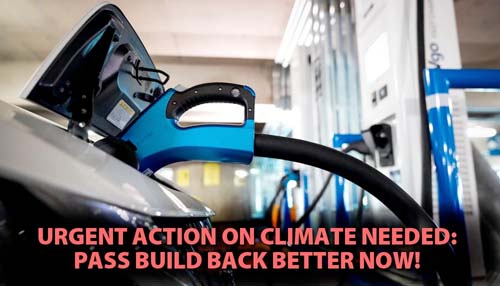 It can be confusing. Congress just passed the infrastructure bill. And the White House has celebrated a victory. But most of the big, innovative, and vital climate spending and programs are in what is called the Build Back Better (BBB) Act. It can be confusing. Congress just passed the infrastructure bill. And the White House has celebrated a victory. But most of the big, innovative, and vital climate spending and programs are in what is called the Build Back Better (BBB) Act.
BBB has over half a trillion dollars out of $1.75 trillion for clean energy tax credits, manufacturing wind turbines and solar panels, environmental justice measures like replacing diesel school buses, and heavy-duty trucks, as well as measures like coastal restoration, forest protection, and more. But so-called moderate Democrats and Congressional Republicans have again held up passing Build Back Better. The measure, already cut to appease members like coal baron Sen. Joe Manchin, is vital to slowing climate change and moving to renewable energy. It is not just the vote of a lifetime. It is a vote on which the fate of every family and future generations hangs. Tell your Senators to take critical climate action HERE • • • • • Duke Oceans Presents Offshore Wind and Wildlife:
Opportunities to Get It Right 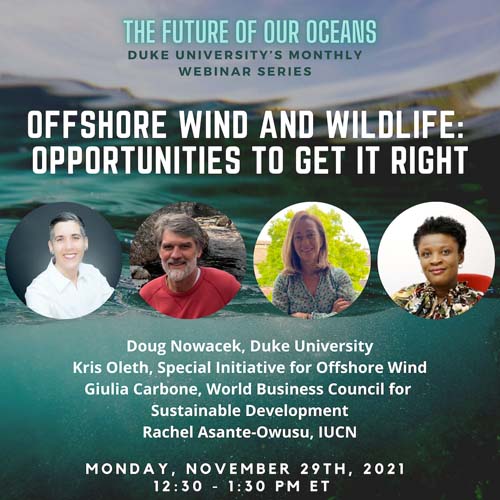 Monday, November 29 from 12:30-1:30 PM EST Monday, November 29 from 12:30-1:30 PM EST
Though it lags behind other areas, the US offshore wind industry is growing quickly with substantial construction set to occur in the coming years.
The potential for impacts to wildlife is important to consider as we strive to responsibly develop this vital renewable energy source.
We will discuss lessons learned from other areas of the world where offshore wind has been extensively developed, and how we can incorporate these lessons with the community of stakeholders in the US to create a responsible supply of clean energy. Join us to hear from experts who will provide insights into vital questions related to this topic. REGISTER HERE • • • • • Resources for the Future Presents Offshore Wind: Today’s Challenges and Tomorrow’s Opportunities 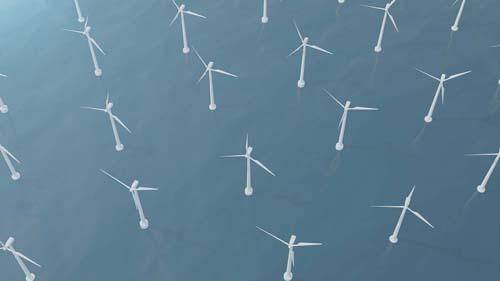 Thursday, December 2 and Friday, December 3 Thursday, December 2 and Friday, December 3
The Biden administration has set a target of 30 gigawatts of operational offshore wind capacity by 2030 as part of larger efforts to halve US emissions by the end of the decade and achieve net zero by midcentury. According to the Department of Energy, this goal would support 77,000 jobs, generate enough electricity to power more than 10 million homes, and cut 78 million metric tons of carbon dioxide emissions. However, the US offshore wind industry is still nascent, and several obstacles remain before such an ambitious goal can be realized. It requires coordinated action from states and the federal government, and the policies and market structures that are put in place today will have a huge impact on the future of the industry and its ability to deliver on the promise of clean energy, jobs, and technology. Join Resources for the Future (RFF) on Thursday, December 2, and Friday, December 3, for a virtual workshop to address and identify key policy, market, and finance issues that will impact the direction of the offshore wind industry in the United States. REGISTER HERE • • • • • Interested in learning more about wind energy? Check out this article from RCC Presidential Fellows, Audrey Magnuson and Isabel Wood 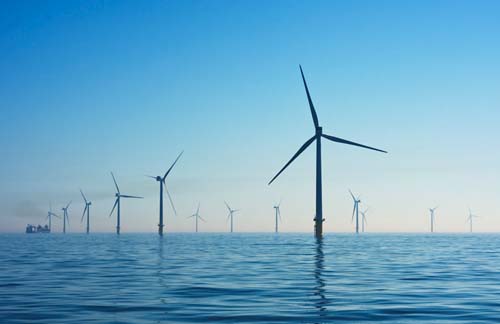 The Wind Beneath Biden’s Wings: Climate Goals Need Wind Energy, Can it Fly? The Wind Beneath Biden’s Wings: Climate Goals Need Wind Energy, Can it Fly?
Without a doubt, the US is about to see a surge in wind energy. Even the Texas panhandle is dotted with turbines. And plans for new wind farms have sped through federal and state approval processes in half a dozen coastal states with ambitious renewable energy targets to hit. But just a few years ago, even wind energy advocates could not have predicted such a boom. How did we get here, and what obstacles might wind energy face now? Heading into the critical Glasgow climate conference (COP26), the Biden Administration flaunted every small step it made toward climate change mitigation. John Kerry returned from his world tour of climate diplomacy to proclaim that the world is “behind” on its climate commitments. Click here to read more | | | | | | | | | 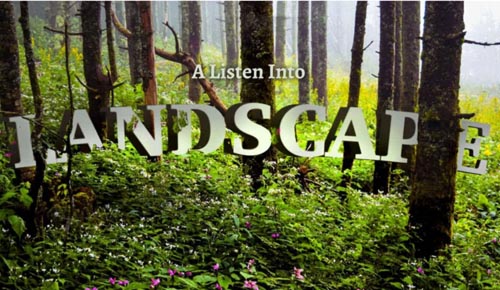 Review by Cameron Oglesby: Let's lend ourselves to Jennifer Vander Veur, a marine biologist and conservationist working to protect Hawaii's coral reef and coastal ecosystems. Due to climate change and ecotourism, the reefs surrounding this archipelago are in increasing danger of bleaching. Jennifer's hope is not only to conserve the islands' natural coastal wonders to but to show people just how rejuvenating the ocean is. Jennifer will very literally take us on a dive into the spectacular ocean biodiversity of Hawaii and what it's meant for her to live and swim alongside all that Hawaii has to offer. Review by Cameron Oglesby: Let's lend ourselves to Jennifer Vander Veur, a marine biologist and conservationist working to protect Hawaii's coral reef and coastal ecosystems. Due to climate change and ecotourism, the reefs surrounding this archipelago are in increasing danger of bleaching. Jennifer's hope is not only to conserve the islands' natural coastal wonders to but to show people just how rejuvenating the ocean is. Jennifer will very literally take us on a dive into the spectacular ocean biodiversity of Hawaii and what it's meant for her to live and swim alongside all that Hawaii has to offer. • • • • • 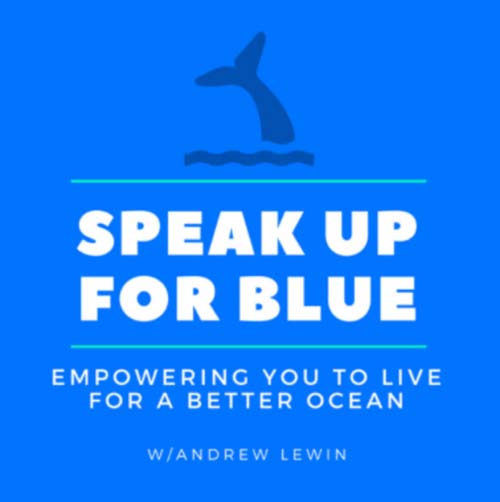 The North Atlantic Right whale's population dipped from 366 to 336 from 2019 to 2020 making it the lowest it has been in 20 years. The North Atlantic Right whale's population dipped from 366 to 336 from 2019 to 2020 making it the lowest it has been in 20 years.
A battle has been waging between fishermen, conservationist, lawyers, and politicians in the Northeast, and for good reason: the North Atlantic Right Whale’s population dropped to just 336, a 20-year low.
Now the state of Maine is embroiled in a debate where the fate of this majestic animal is at stake. Do they shut down lobster fishing for 4-months to minimize whale fatalities? Or will their economic growth win out? Learn more in this episode from Speak Up For the Ocean Blue. | | | | | |  Audrey Magnuson, RCC Presidential Fellow Audrey Magnuson, RCC Presidential Fellow
Audrey Magnuson co-leads RCC’s Coasts and Ocean program and works on environmental justice and policy. She is a senior at Duke University majoring in Public Policy with minors in Environmental Science and Art History. audrey.magnuson@duke.edu | | | | | | | | | |  The Rachel Carson Council Depends on Tax-deductible Gifts From Concerned Individuals Like You. Please Help If You can. The Rachel Carson Council Depends on Tax-deductible Gifts From Concerned Individuals Like You. Please Help If You can. | | | |  Sign Up Here to Receive the RCC E-News and Other RCC Newsletters, Information and Alerts. Sign Up Here to Receive the RCC E-News and Other RCC Newsletters, Information and Alerts. | | | | | | | | | | | |